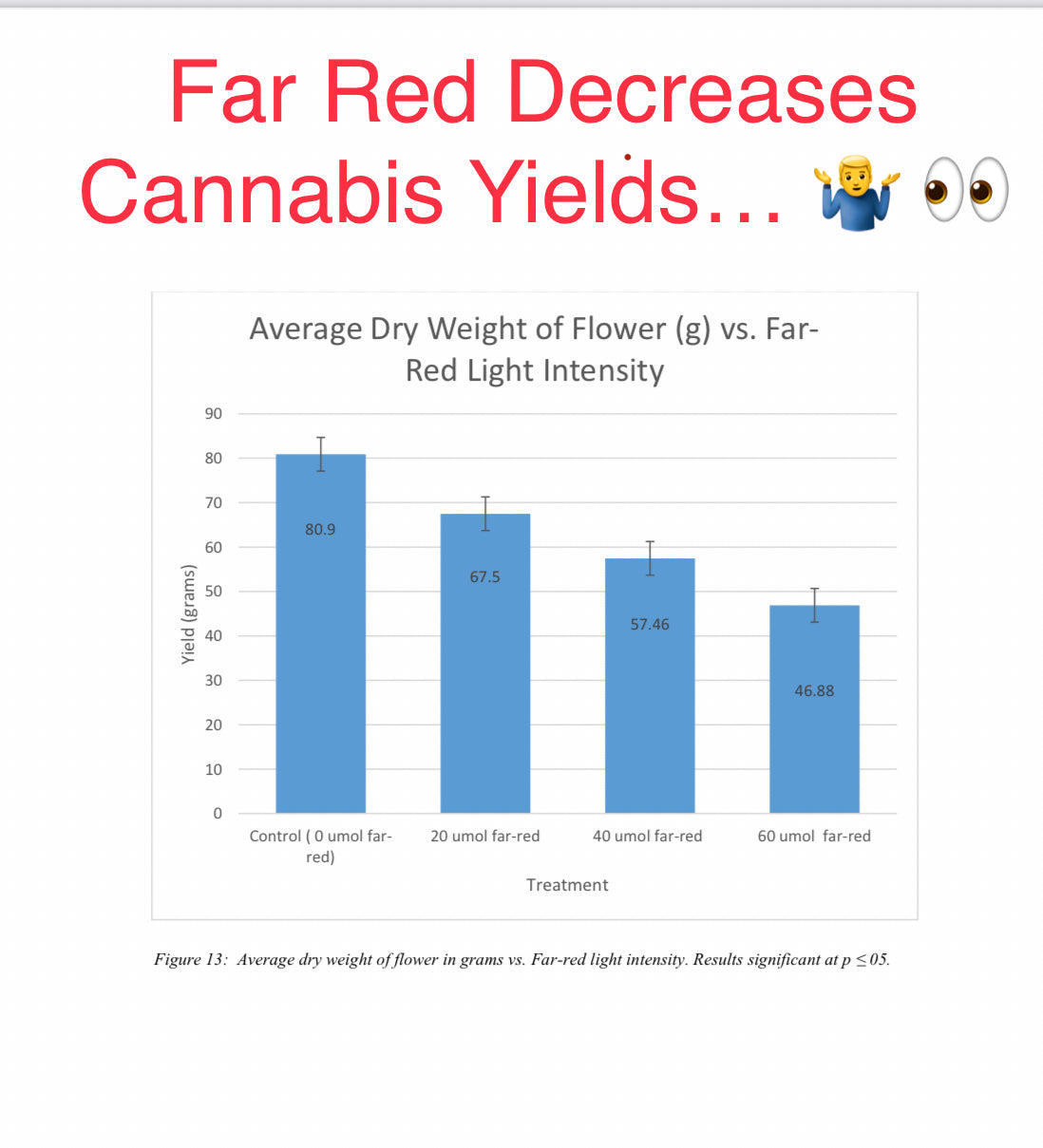Does Supplemental Far-Red DECREASE Cannabis Yields?
June 7, 2023 – Danielle Daly

Welcome back to our ongoing blog series, originally shared on Instagram. Today, we delve into the intriguing world of Far-Red Cannabis Research. Buckle up, as we uncover the latest findings that might raise some eyebrows regarding 𝐒𝐮𝐩𝐩𝐥𝐞𝐦𝐞𝐧𝐭𝐚𝐭𝐢𝐨𝐧. If you've been following us, you might recall similar research we shared a couple of months ago.
Before we dive in, it's essential to note that Mammoth has ventured into the realm of Far-Red and will continue to incorporate it into our spectrum. Stay tuned for exciting developments.
As a company firmly grounded in research, we couldn't find compelling evidence to support the supplementation of far-red light, whether it's at the end of the day or during the flowering phase alone. Consequently, we have never introduced a Far-Red supplementary bar or a spectrum-tuning fixture.
**Key Research Discoveries:**
End of Day Far Red: Contrary to popular belief, far-red light does NOT accelerate the plant's "sleep" process. Check out the Bugbee video attached for more insight.
Supplemental Far Red: Research suggests that additional far-red light may actually decrease yields (more is not better). It's worth noting that this observation was primarily made on sativa plants, and there haven't been extensive trials.
Cannabinoids/THC: Preliminary findings indicate that supplementing with far-red light may not improve cannabinoids like THC and could even have a negative impact, although this isn't conclusive.
**Potential Benefits of Full-Time Far Red:**
𝐅𝐮𝐥𝐥 𝐓𝐢𝐦𝐞 Far Red: Some studies have shown that using far-red light throughout the growth cycle, not just as a supplement, can enhance plant growth from seed to harvest.
𝐁𝐚𝐥𝐚𝐧𝐜𝐞 of Blue + Far Red: Achieving the right balance between additional blue and far-red light (to offset far-red stretch) could potentially increase yields and slightly reduce flowering times.
𝐌𝐨𝐫𝐩𝐡𝐨𝐥𝐨𝐠𝐲 Control: If you're aiming to manipulate plant morphology, a separate far-red channel might have its merits.
In conclusion, we're all for experimenting with spectrum, and it's essential to note that one or two studies don't make a conclusive case. However, based on the current evidence, supplemental far-red lighting appears to be an added expense that may not yield significant benefits.
**Summary of Research Results:**
The unexpected outcome of decreased yield in our study raises questions, as the cause remains unknown. We observed an increase in leaf senescence throughout each treatment, a phenomenon associated with far-red light and the shade avoidance response, as reported by various authors. This senescence may have reduced overall photosynthetic potential, resulting in the yield decrease observed. While this is speculative and based on existing literature, it offers a plausible explanation for our findings. The reduction in yield is a concerning outcome, especially considering the absence of significant differences in cannabinoids or terpenoids.










1 comment
Far Red / UV-A & UV-B – used appropriately is like having an electric motor vs a combustion engine.
Then there are other light spectrums nm that activate other chemical signaling pathways – roughly 1000 that can be triggered and manipulated with the proper light spectrums and intensity. For example, 437nm.
Leaf expansion, cell expansion, and the calyx’s blow up like balloons 🎈, and cannabinoid biosynthesis is in full effect. As well as terpinoid and flavanoid production via secondary metabolite synthesis.
Charlie Brown
Research Scientist